When Wallace Stegner wrote that America's national parks were “the best idea we ever had,” he did not mean “It's a good idea to steer your RV through Yosemite with the A/C on.” Over the past decade our great playgrounds have devolved into drive-through tourist traps—even as visitation held steady at around 275 million, backcountry trips plummeted by 13 percent. But change is afoot. The government is pouring $920 million into the parks to rebuild roads and relieve congestion (read: less pre-playtime spent sucking exhaust). Come this fall, Ken Burns's latest PBS mega-series will give the parks 12 hours of high-profile lovin'. Throw in a recession that has adventurers planning vacations closer to home and you've got a recipe for what we prefer to call a revival. How to take Yellowstone & Co. back from the map-and-camera crowd? Start with our guide to the wildest, least-trafficked spots in America's last best places.
Big Bend National Park
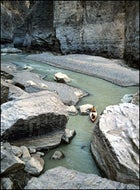 Big Bend National Park
Big Bend National ParkZion National Park
Utah
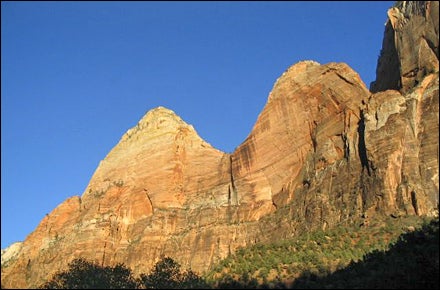
The Recovery Package: Cash Infusion
Will President Obama's $787 billion stimulus bill save the economy? Who knows. But at least it will give our parks an overdue sprucing up. The bill set aside $920 million for the National Park Service, to be allotted by September 2010. Most of the money will go to badly needed repair of roads and facilities like ranger stations.THE INSIDER: Ray O'Neil, backcountry supervisor and nine-year park veteran
THE BOTTLENECK: On a busy summer day, upwards of 20,000 people cram into shuttle buses on Zion Canyon Scenic Drive.
THE BACK DOOR: “By hiking the west rim of Zion Canyon, you'll leave 99 percent of the tourists behind,” says O'Neil. Take a shuttle ($35 per person; ) to Lava Point, start of the 15-mile West Rim Trail. Spend a night five miles in at Potato
THE LAUNCH PAD: The Desert Pearl Inn (doubles from $150; ), at the entrance to Zion in Springdale, Utah, rests in the shadow of the park's sandstone spires.
Olympic National Park
Washington
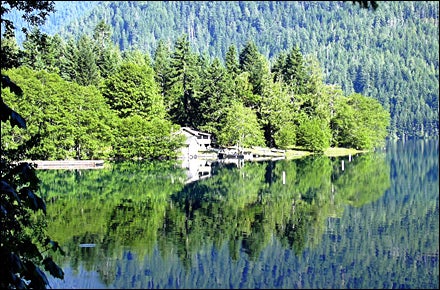
The Half-Baked Plan: Isle Royale National Park, Lake Superior, Michigan
ACRES: 133,781. VISITORS (2008): 138,038. MOOSE: 650. WOLVES: 23. ARRIVE: $61 one-way ferry from Grand Portage, Minnesota ().MASOCHISTS: Minong Trail, rugged north shore (28 miles, three days). BONS VIVANTS: Greenstone Ridge Trail to Rock Harbor (40 miles, five days). BOTH: Repel lemon-eucalyptus insect repellent ($8; ).THE INSIDER: Jon Preston, ranger in the Hoh Rainforest and 17-year park veteran
THE BOTTLENECK: There are three main temperate-rainforest river valleys in Olympic, the most popular of which is the Hoh. “We get 230,000 visitors a year,” says Preston.
THE BACK DOOR: Go to the Queets Valley, 1.5 hours south of the Hoh. “It receives hardly any visitors, partly due to lack of
THE LAUNCH PAD: The nearby Kalaloch Lodge overlooks the Pacific on Highway 101 (doubles from $190; ).
Rocky Mountain National Park
Colorado
THE INSIDER: Barry Sweet, backcountry ranger and 20-year park veteran
THE BOTTLENECK: Car traffic stays concentrated in the Bear Lake corridor and among the drive-by elk herds of Moraine and Horseshoe parks. RMNP's only fourteener, Longs Peak (14,255 feet), also gets trampled all summer long.
THE BACK DOOR: Sweet suggests sticking to the remote western slope of the park, best accessed through the town of Grand Lake (“Snowmobile Capital of Colorado”), versus the more popular eastern entrance, at Estes Park. The Colorado River trailhead, off Route 34, reaches high meadows and mountain lakes among the 12,000-foot Cloud Peaks—Cumulus, Nimbus, and Stratus—after a 6.2-mile hike. “Lake of the Clouds is another 1.5 miles,” says Sweet. “It's just great scenery.” Pick up backcountry-camping permits at the Beaver Meadows visitor center, three miles from Estes Park ($15; 970-586-1206).
THE LAUNCH PAD: Try the Grand Lake Terrace Inn, on Main Street in Grand Lake, for convenience (doubles from $120; ).
Sequoia and Kings Canyon National Park
California
The Recovery Package: Necessary Layoffs
A quick rundown of former Interior secretary Dirk Kempthorne's greatest hits as parks overseer:(1) Under his watch, the NPS tried to increase the number of snowmobiles in Yellowstone to 540 per day; last fall a federal court declared the proposal illegal.
(2) On election day, Kempthorne opened some 148,000 acres of land in Utah—including large swaths near Arches and Canyonlands national parks—to oil and gas leases.
(3) Insult to injury: Before leaving office, Bush, Kempthorne, and pals pushed through a midnight regulation permitting concealed and loaded firearms within park limits. Suffice it to say any replacement would be an improvement, but early returns suggest that new Interior secretary Ken Salazar will o…
Sequoia and Kings Canyon National Park
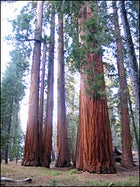 Sequoia and Kings Canyon National Park
Sequoia and Kings Canyon National ParkTHE INSIDER: Kris Thornbury, budget assistant in the Division of Maintenance, 16-year park veteran, and, according to NPS colleagues, the go-to expert on backcountry camping
THE BOTTLENECK: Yosemite National Park, some three hours north
THE BACK DOOR: “With more than 800 miles of trails, you never run out of places to explore in Kings Canyon,” says Thornbury. “I would camp at 10,551-foot Gardiner Basin, near the shore of Lake Alaska, in the southeast part of the park.” From the trailhead at Cedar Grove, a glacial valley off Highway 180, it's a 25-mile trek to Gardiner Basin. On the way, you'll hike through upper Paradise Valley, then cross the South Fork of the Kings River. Stop at Woods Creek, set up camp anywhere, and cool your feet in the stream
THE LAUNCH PAD: John Muir Lodge (doubles, $170; 559-335-5500) is a rustic 36-room hotel just half a mile from 154-acre Grant Grove, which is full of monstrous sequoias.
Glacier National Park
Montana
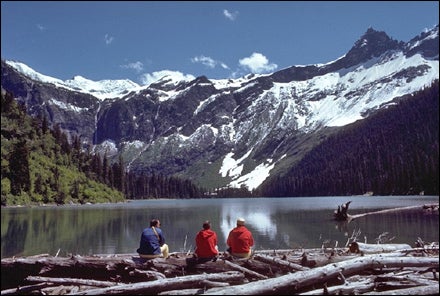
The Recovery Package: End Prohibition
Last December, the NPS proposed a mountain-bike rule that would allow park managers to open more trails to knobby tires. Proponents think the new rule could be passed as soon as this summer; early adopters could include Fort Dupont Park, in Washington, D.C., and Texas's Big Bend National Park, which are working with the International Mountain Bicycling Association to set up trail systems. For updates, check .THE INSIDER: Kyle Johnson, wilderness specialist and 27-year park veteran
THE BOTTLENECK: “You see most of the people in places like Avalanche Lake and Logan Pass, off Going-to-the-Sun Road,” says Johnson. “These are people hiking a couple of miles or a few hundred yards.”
THE BACK DOOR: “People always ask me what my favorite place in the park is,” says Johnson. “My favorite place is where I am. There are a lot of great hikes, great fishing spots. Maybe I'm being vague. As soon as someplace is mentioned in ���ϳԹ���, it's not
THE LAUNCH PAD: Many Glacier Hotel (doubles from $142; ) is old-school, Swiss-style, and 12 miles from the finest 28-ounce ribeye in America, at the Babb Bar Cattle Baron Supper Club (), which pretty much constitutes the town of Babb.
Great Smoky Mountains National Park
North Carolina
Half-Baked Plan: Dry Tortugas National Park, Florida
ACRES: 64,700. VISITORS (2008): 63,947. ISLANDS: 7. ISLANDS OPEN TO HUMANS: 2. STORES: 1 ARRIVE: $177 round-trip ferry from Key West to Garden Key (). PACK WISELY: Tent, food, water, rum, snorkel, fins, inflatable sea kayak (). PITCH TENT: Garden Key campsite ($3; 305-242-7700). PADDLE to Loggerhead Key (two miles): frigate birds, masked boobies, goliath grouper, nurse sharks. SNORKEL with loggerhead turtles. Head back. RUM: Zacapa 23 ($45;THE INSIDER: George Minnigh, backcountry ranger and 25-year park veteran
THE BOTTLENECK: Nine million people visited the park last year, and, according to Minnigh, “probably half never left the park's roads.” The 11-mile Cades Cove Loop Road, on the western end of Great Smoky, receives two million visits per year.
THE BACK DOOR: Suffer through six miles of traffic on Cades Cove Loop Road and you're home free: Turn south onto Forge Creek
THE LAUNCH PAD: Lakeview at Fontana Resort (from $80; ), on the outskirts of Bryson City, offers unpretentious accommodations and indulgent hot-stone spa treatments.
��
Big Bend National Park
Texas
The Recovery Package: Smart Marketing
Ken Burns hopes to do for the national parks what Peter Jackson did for New Zealand: turn destinations into stars. Burns's epic 12-hour documentary The National Parks: America's Best Idea premieres May 22 at the Telluride Mountainfilm Festival and will air on PBS this September. If its aggressive early publicity campaign is any indication, the network thinks the series will rival Burns's The Civil War in scope and reach—meaning legislators will be hearing a lot about public wilderness in the coming year. “It's going to really rekindle interest,” says Bryan Faehner, associate director for park uses with the National Parks Conservation Association, “and hopefully get people to remind their congressmen to fund the parks.”THE INSIDER: David Elkowitz, chief of interpretation and 13-year park veteran
THE BOTTLENECK: “The Lost Mine Trail, off Basin Road, and the Window Trail, near the Chisos Basin visitor center, are probably the most popular among day-trippers,” says Elkowitz. “But in the summer there are hardly any crowds. People think it's too hot. It might be 105 along the Rio Grande, but it's 20 degrees cooler in the mountains.”
THE BACK DOOR: “Some of my favorite hiking
THE LAUNCH PAD: The Chisos Mountains Lodge (doubles, $120; ) is eight miles from the Basin Road, in the middle of the 800,000-acre park. Kick off your boots on the stone patio, watch the sun set over the Chisos, and crack a locally brewed Shiner Bock.
